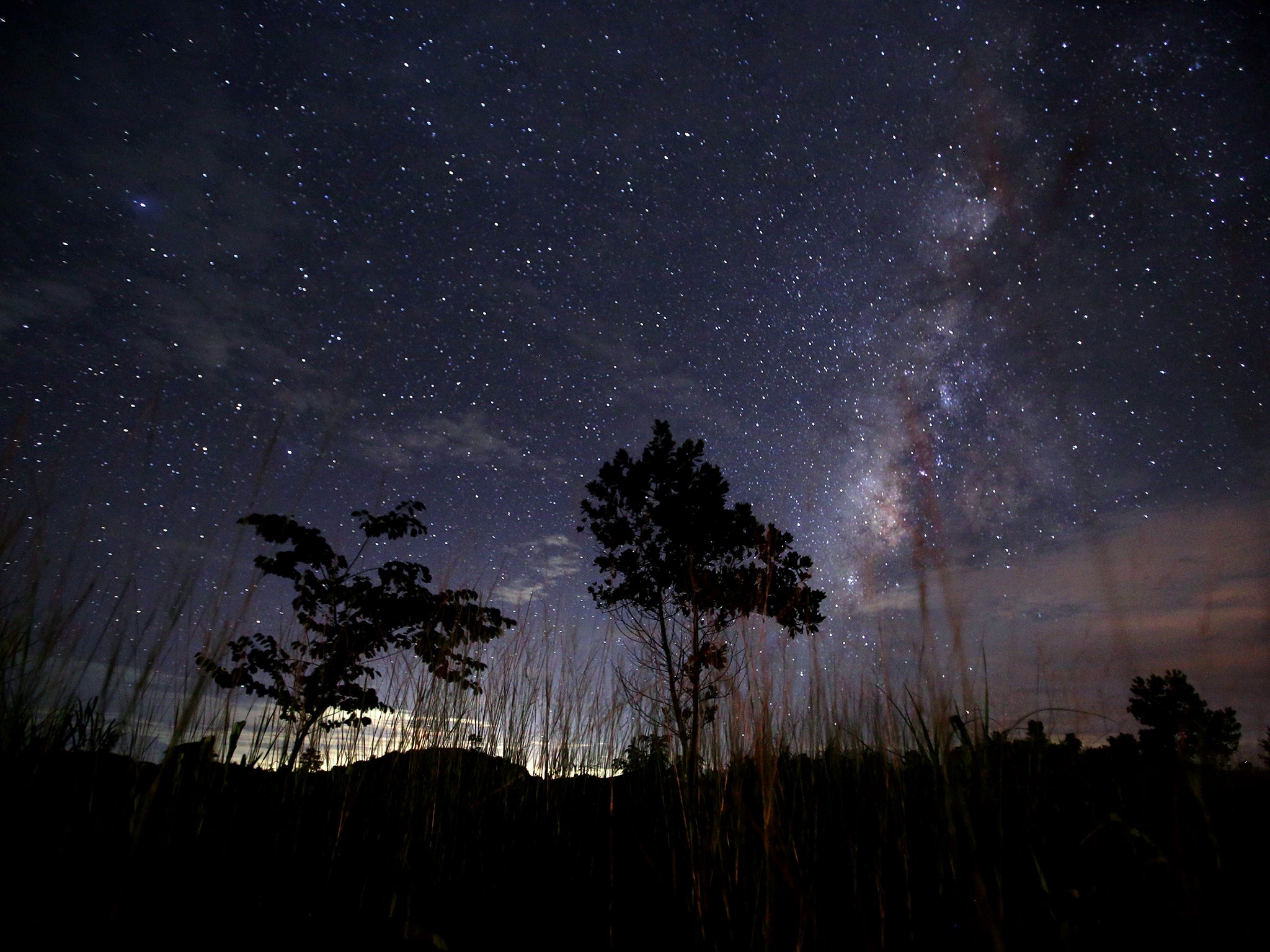Alien megastructure: Dimming of nearby star 'more likely to be natural than artificial'
Seti survey of KIC 8462852 rules out existence of radio signals that could indicate alien presence

Your support helps us to tell the story
From reproductive rights to climate change to Big Tech, The Independent is on the ground when the story is developing. Whether it's investigating the financials of Elon Musk's pro-Trump PAC or producing our latest documentary, 'The A Word', which shines a light on the American women fighting for reproductive rights, we know how important it is to parse out the facts from the messaging.
At such a critical moment in US history, we need reporters on the ground. Your donation allows us to keep sending journalists to speak to both sides of the story.
The Independent is trusted by Americans across the entire political spectrum. And unlike many other quality news outlets, we choose not to lock Americans out of our reporting and analysis with paywalls. We believe quality journalism should be available to everyone, paid for by those who can afford it.
Your support makes all the difference.Unusual signals from a nearby star that have generated an internet stir about the possible discovery of an alien civilisation are more likely to be natural than artificial according to the official organisation in charge of the search for extra-terrestrial intelligence (Seti).
A scientific survey of a star system called KIC 8462852 has ruled out the existence of two types of radio signals which could indicate the presence of aliens who are either trying to communicate across space or who may be using spacecraft powered by intense microwave beams.
The suggestion came about because of the unusual dimming of the star picked by the Kepler space telescope, which was designed to detect the minute fluctuation in starlight caused by orbiting planets in distant solar systems as they passed in front of their stars.
Most exoplanets cause the starlight to dim by a few per cent and on a regular, periodic basis. However, in the case of KIC 8462852, which is 1,500 light years from Earth, its starlight dimmed by as much as 20 per cent with a mysteriously irregular timing – as if by design.
This gave rise to the suggestion that there might be some alien megastructure that occasionally blocks the light, such as a so-called “Dyson swarm” of solar panels designed to gather energy for an advanced alien civilisation, named after the physicist Freeman Dyson who postulated the existence of such power-generating technology 50 years ago.
Other possible structures that could be causing the unusual dimming effect include artificial space habitats or a planet-sized object built to provide long-lasting and far-reaching signals to other galactic inhabitants, according to the Seti Institute in Mountain View, California.
In order to test the idea of an advanced alien civilisation, scientists at Seti trained a radio-listening instrument called the Allen Telescope Array on the star for more than two weeks in search of two types of radio waves – “narrow-band” signals of the sort an alien society might use to hail other intelligent civilisations in the galaxy, and “broad-band” signals that might be due to a beamed, spacecraft-propulsion system.
“This is the first time we’ve used the Allen Telescope Array to look for relatively wideband signals, a type of emission that is generally not considered in Seti searches,” said Gerry Harp of the Seti Institute, who led the study published in arXiv.org
Unfortunately for supporters of the alien-life theory, the Seti institute failed to find clear evidence for either type of signal produced by artificial transmitters that would need to be between 100 and 10 million times the power of radio transmitters used today on Earth.
“The history of astronomy tells us that every time we thought we had found a phenomenon due to the activities of extra-terrestrials, we were wrong,” said Seth Shostak, a veteran searcher for alien-life at the Seti Institute.
“But although it’s quite likely that this star’s strange behaviour is due to nature, not aliens, it’s only prudent to check such things out,” Dr Shostak said.
Although astronomers are still mystified about what can be causing the unusual dimming of KIC 8462852, some experts are leaning towards the idea that it is caused by passing fragments of a comet that had broken up – despite the apparent absence of the cometary dust normally associated with such a phenomenon.
Join our commenting forum
Join thought-provoking conversations, follow other Independent readers and see their replies
Comments